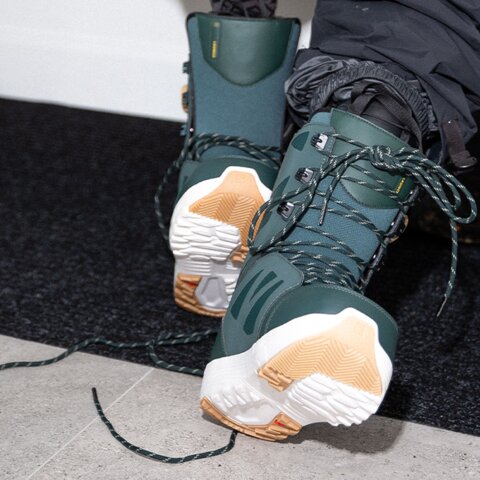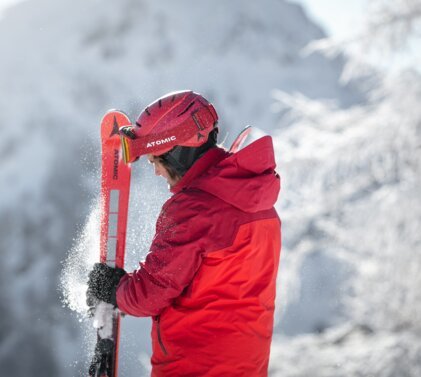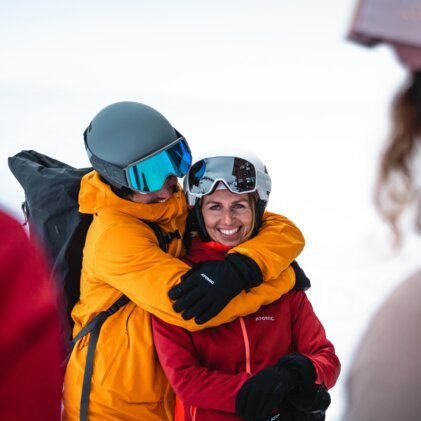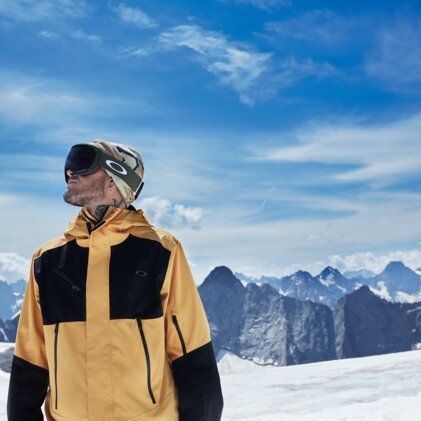It's a match: How to find the perfect helmet
*Advertisement
The time when snowboard helmets were considered uncool is long gone. Today, wearing a helmet is considered smart. Because winter sports enthusiasts know: Head protection can save your life in the event of a snowboarding accident – provided the helmet meets a few basic requirements. You can find out what they are on this page.
In any case, your motto when buying a helmet should always be: safety before style. But don’t worry, you still won't have to sacrifice your coolness – the choice is vast when it comes to helmet designs.
Safety
A snowboard helmet should definitely be standardised. To find out whether that’s the case, look for “EN 1077”, which means that the helmet meets the European standard for ski and snowboard helmets and thus fulfils the most important safety requirements. On American products, the corresponding standardisation is “ASTM F 2040”.
Important: According to the manufacturer's recommendations, you should replace your snowboard helmet after three to five years, depending on how often you use it – even if there is no obvious damage to it. You also need new head protection after a crash or fall.
Even safer with MIPS
Have you heard of MIPS technology? If a helmet is equipped with it, it protects you even more reliably. Namely: against rotational forces. The core of Multi-Directional Impact Protection is a movable inner shell. If your head rotates on impact, the helmet absorbs the movement and compensates for it. This reduces the risk of sustaining an injury.
Tip: Helmets with MIPS are slightly more expensive. But in the event of an accident, they can make an invaluable difference.
How is a helmet constructed?
The main components of a snowboard helmet are:
- Shell: mechanical protection made of carbon, plastic or fibreglass
- Inner liner: cushioning by means of EPS (hard) foa
Another distinction can be made based on the manufacturing method:
- In-mould process: The thin, hard outer shell and the hard foam are fused. The helmet is light and stable. Somewhat more expensive.
- Hardshell method: A thicker outer shell and the inner shell are glued together. The helmet is just as stable but slightly heavier. Cheaper option.
- Hybrid: The hybrid option combines the advantages of hardshell and in-mould helmets.
What are the differences between various types of snowboard helmets?
There are men's and women's helmets, special freeride or race helmets, as well as different designs and features. For most of these criteria, the choice is a matter of taste. However, one distinction is important: that of class.
Features
Snowboard helmets can boast a variety of cool and handy features. We recommend the following:
Ventilation system
In a helmet, you should neither sweat nor get a "cool head". Adjustable ventilation systems are ideal. They allow you to control the airflow by opening and closing the vents as you see fit.
Goggle holder
If you wear goggles, your helmet should have a clip for them on the back into which you can hook the goggle strap. This prevents the strap from slipping upwards. Alternative: a snowboard helmet with a visor.
Lining and tightening system
There are helmets with a removable and washable inner lining – a clear advantage in terms of hygiene! Some helmets also have an in-built adjustable tightening system, which lets you customise the fit to the circumference of your head. But be careful: Even without tightening this system, your helmet has to sit firmly on your head! Helmets that are too big do not offer complete protection.
Chinstrap
The chinstrap should be padded and adjustable. Ideally, you can open and close the buckle with your gloves on. Quick-release buckles are especially convenient.
Earpads
Many snowboard helmets feature removable earpads. In harsh weather conditions, they protect your ears from wind and cold. On warmer days, it can be nice to remove the earpads.
Music on! Some earpads come with integrated speakers that can be connected to your mobile phone. Insiders, however, prefer Bluetooth headphones. They can be removed on the fly if necessary. For safety's sake, however, you should ride without headphones and not blast your favourite song at full volume.
Tips for choosing the perfect snowboard helmet
Now you know what features you need, what safety features to look for, and what helmet classes and styles are available. So you're ready for the fitting process. Whether you want to buy or rent a helmet, here's our advice:
- Safety before price! A good snowboard helmet costs between 100 and 130 euros. Nevertheless, safety criteria should have the highest priority.
- Measure the circumference of your head! This is especially important if you order online. Even though the circumference of your head is not an indicator of fit, it can be a rough guideline for ordering the right helmet. Tip: Place the measuring tape directly above your eyebrows and measure the circumference. You can then find out the size with the help of a size chart.
- Always try the helmet on! Rule of thumb: When shaking your head and nodding with the chinstrap open, the helmet should not budge. At the same time, it should feel comfortable and not pinch anywhere. Tip: Try it on for at least 5 to 10 minutes at a time.
Snowboard helmets and more at INTERSPORT Rent
Our number one piece of advice: Rent your snowboard helmet at INTERSPORT Rent. That’s where you get first-hand tips from our RENTertainers, and you can try a different helmet every day – until you find your "perfect match"!
















